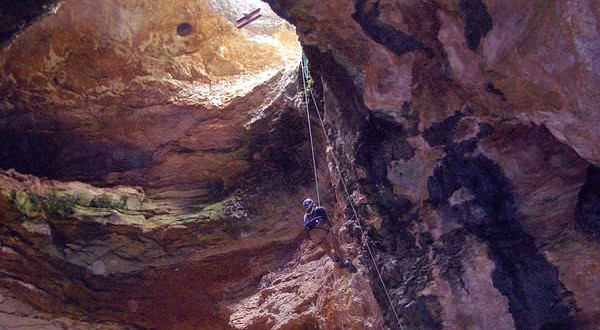Scientists excavating an ancient U.S. cave believed to contain the remains of Ice Age mammals have found hundreds of prehistoric animals.
The researchers are pretty sure the animals fell into the sinkhole and died, according to Reuters.
The excavation by an international team of paleontologists marked the first exploration of Natural Trap Cave at the base of the Bighorn Mountains in north-central Wyoming since it was discovered in the 1970s. The scientists found nearly 200 large bones of animals such as American cheetahs, bison, horses and wolves that might have existed in North America 12,000 to 23,000 years ago, Reuters reported.
“We found evidence of bison, a bit of gray wolf and quite a lot of cheetah and horse,” said Julie Meachen, a paleontologist at the Des Moines University. “Some bones still have collagen with intact DNA for genetic testing, and some fossils are fragments crushed by rocks. But we take it for what it is when we find it.”
In addition to the animal bones, the researchers also unearthed a huge amount of microfossils of creatures such as birds, lizards and snakes. The researchers believe the new findings will help them better understand the climate, diets and genetic diversity of ancient creatures of North America that fell victim to the Ice Age extinction more than 10,000 years ago.
A hole in the ground serves as the only entrance into the cave where — over millennia — many animals fell more than 80 feet to their deaths, researchers said. They added the bones are buried in sediment as much as 30 feet deep and that the cave’s cold and damp conditions might have helped the fossils remain preserved.
According to Brent Breithaupt, a paleontologist for the U.S. Bureau of Land Management, or BLM, the well-preserved remains are being sent to universities in the U.S. as well as the Australian Center for Ancient DNA at the University of Adelaide.
“It’s an incredible site. It definitely is one of the most significant sites that BLM manages, and it will provide very, very important information,” Breithaupt told the Associated Press.
Agencies/Canadajournal
 Canada Journal – News of the World Articles and videos to bring you the biggest Canadian news stories from across the country every day
Canada Journal – News of the World Articles and videos to bring you the biggest Canadian news stories from across the country every day



